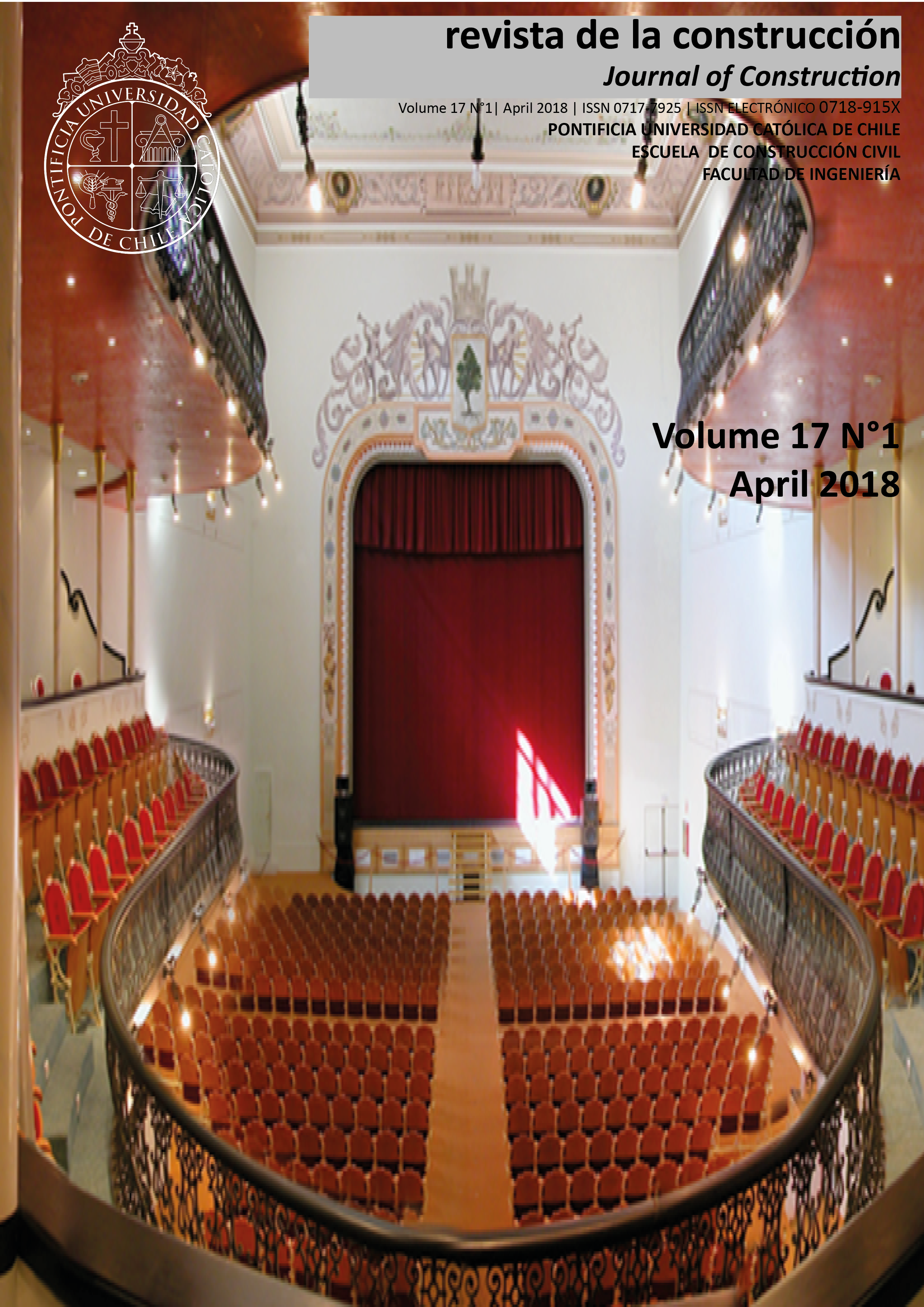Comparison between building roof construction systems based on the LCA
DOI:
https://doi.org/10.7764/RDLC.17.1.123Keywords:
Building roofs, Sustainable design, Sustainable construction, Ecodesign, MaintenanceAbstract
Based on Life Cycle Assessment techniques, this research compares the environmental impact of 11 variants for the construction of roofs in residential buildings. Among others, the energy used, the carbon footprint and the waste associated to placement and packaging are found, leading to 9 sustainability indicators, which include socio-economic aspects such as the decennial maintenance cost, the maintainability ratio or the quantity of labour necessary. Each of the roofs was characterised based on 20 typologies of constituent layers, categorised under 6 construction functional groups, according to the function held in the roofs. Based on this study, it is demonstrated that the most sustainable roofs are non-trafficable flat roof with gravel finishing (with either a PVC or bituminous layer), followed by pitched roofs (with ceramic and cement mortar tiles) and green roofs with PVC layer. It was noted that trafficable flat roofs generate greater emissions of carbon dioxide and use more energy in their construction, and that flat roofs with gravel finishing require a lower cost of decennial maintenance. Furthermore, pitched roofs generate a higher amount of construction and packaging waste than flat roofs and require more labour, especially in the case of pitched roofs with tiles.
Downloads
Downloads
Published
How to Cite
Issue
Section
License
Copyright (c) 2019 Manuel J. Carretero-Ayuso, Justo García-Sanz-Calcedo

This work is licensed under a Creative Commons Attribution-NonCommercial-NoDerivatives 4.0 International License.





